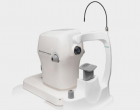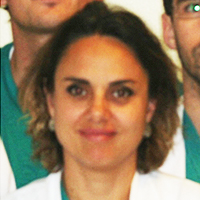Abstract
Research Article
Anatomy and biomechanics of the rat knee ligaments
Zhe Song*, Xiang-Hua Deng, Scott Rodeo, Zoe M Album, Arielle Hall, Tina Chen, Brett Croen and Rodeo A Scott*
Published: 27 April, 2023 | Volume 8 - Issue 2 | Pages: 008-015
In this study, the authors systematically examined the anatomical and biomechanical properties of the ligaments in the normal rat knee. These biomechanical data will facilitate the use of the rat knee model for future studies of knee ligament injury, repair, and reconstruction. Fifty-six fresh cadaver male Sprague-Dawley rats, aged 16 weeks, were used for this study, with 48 rats for biomechanical testing and 8 for micro-CT and histological evaluation. Our findings suggest that the gross anatomy of the rat knee joint and ligaments is very similar to humans despite some minor differences and features unique to the rat knee. The patella tendon and ACL are the two strongest soft tissue structures in the rat knee joint, with the highest failure force and stiffness, and both play a role in the anterior stability of the knee. In comparison, the failure force and stiffness of the LCL is half of the MCL, suggesting that other structures, such as the popliteal tendon, may play some role in lateral knee stabilization besides the LCL. In addition, our data suggest that anterior knee stability was improved after ACL reconstruction, but was not fully restored to intact ACL function. In conclusion, our study indicates the anatomical and biomechanical properties of the knee joint and ligaments of rat knees. Then we could confirm a reproducible and realistic rat model of knee ligaments like the clinical cases, and provide a basis for the study of knee ligament biology that simulates techniques used in humans.
Read Full Article HTML DOI: 10.29328/journal.jsmt.1001065 Cite this Article Read Full Article PDF
Keywords:
Rat knee; Ligaments; Biomechanics; CT image
References
- Bonasia D, Ross P, Rossi R. Anatomy and Biomechanics of the Knee. Orthopedic Sports Medicine. Springer Milan.
- Miyasaka K, Daniel D, Stone M. The incidence of knee ligament injuries in the general population. American Journal of Knee Surgery. 1991.
- Griffin LY, Albohm MJ, Arendt EA, Bahr R, Beynnon BD, Demaio M, Dick RW, Engebretsen L, Garrett WE Jr, Hannafin JA, Hewett TE, Huston LJ, Ireland ML, Johnson RJ, Lephart S, Mandelbaum BR, Mann BJ, Marks PH, Marshall SW, Myklebust G, Noyes FR, Powers C, Shields C Jr, Shultz SJ, Silvers H, Slauterbeck J, Taylor DC, Teitz CC, Wojtys EM, Yu B. Understanding and preventing noncontact anterior cruciate ligament injuries: a review of the Hunt Valley II meeting, January 2005. Am J Sports Med. 2006 Sep;34(9):1512-32. doi: 10.1177/0363546506286866. PMID: 16905673.
- Carlson K. Assessment of post-rehabilitation ACL reconstructed knees. Australian International Academic Centre. 2020.
- Lohmander LS, Ostenberg A, Englund M, Roos H. High prevalence of knee osteoarthritis, pain, and functional limitations in female soccer players twelve years after anterior cruciate ligament injury. Arthritis Rheum. 2004 Oct;50(10):3145-52. doi: 10.1002/art.20589. PMID: 15476248.
- Strauss EJ, Barker JU, Bach BR. Osteoarthritis in the anterior cruciate ligament-deficient knee epidemiology, biomechanics, and effects on the meniscus and articular cartilage. 2010.
- Leumann A, Leonard T, Nüesch C, Horisberger M, Mündermann A, Herzog W. The natural initiation and progression of osteoarthritis in the anterior cruciate ligament deficient feline knee. Osteoarthritis Cartilage. 2019 Apr;27(4):687-693. doi: 10.1016/j.joca.2019.01.003. Epub 2019 Jan 11. PMID: 30641135.
- Kim YM, Lee CA, Matava MJ. Clinical results of arthroscopic single-bundle transtibial posterior cruciate ligament reconstruction: a systematic review. American Journal of Sports Medicine. 2011; 27(2): 141.
- Race A, Amis AA. The mechanical properties of the two bundles of the human posterior cruciate ligament. J Biomech. 1994 Jan;27(1):13-24. doi: 10.1016/0021-9290(94)90028-0. PMID: 8106532.
- Frobell RB, Roos EM, Roos HP, Ranstam J, Lohmander LS. A randomized trial of treatment for acute anterior cruciate ligament tears. N Engl J Med. 2010 Jul 22;363(4):331-42. doi: 10.1056/NEJMoa0907797. Erratum in: N Engl J Med. 2010 Aug 26;363(9):893. PMID: 20660401.
- Klimkiewicz JJ, Petrie RS, Harner CD. Surgical treatment of combined injury to anterior cruciate ligament, posterior cruciate ligament, and medial structures. Clin Sports Med. 2000 Jul;19(3):479-92, vii. doi: 10.1016/s0278-5919(05)70219-2. PMID: 10918961.
- Woo SL, Chan SS, Yamaji T. Biomechanics of knee ligament healing, repair and reconstruction. J Biomech. 1997 May;30(5):431-9. doi: 10.1016/s0021-9290(96)00168-6. PMID: 9109554.
- Meller R, Haasper C, Westhoff J, Brand J, Knobloch K, Hankemeier S, Hesse E, Krettek C, Jagodzinski M. An animal model to study ACL reconstruction during growth. Technol Health Care. 2009;17(5-6):403-10. doi: 10.3233/THC-2009-0561. PMID: 20051620.
- Nguyen DT, Dellbrügge S, Tak PP, Woo SL, Blankevoort L, van Dijk NC. Histological characteristics of ligament healing after bio-enhanced repair of the transected goat ACL. J Exp Orthop. 2015 Dec;2(1):4. doi: 10.1186/s40634-015-0021-5. Epub 2015 Feb 28. PMID: 26914872; PMCID: PMC4544611.
- Ma CB, Kawamura S, Deng XH, Ying L, Schneidkraut J, Hays P, Rodeo SA. Bone morphogenetic proteins-signaling plays a role in tendon-to-bone healing: a study of rhBMP-2 and noggin. Am J Sports Med. 2007 Apr;35(4):597-604. doi: 10.1177/0363546506296312. Epub 2007 Jan 11. PMID: 17218656.
- Cai C, Chen C, Chen G, Wang F, Guo L, Yin L, Feng D, Yang L. Type I collagen and polyvinyl alcohol blend fiber scaffold for anterior cruciate ligament reconstruction. Biomed Mater. 2013 Jun;8(3):035001. doi: 10.1088/1748-6041/8/3/035001. Epub 2013 Mar 26. PMID: 23531980.
- Rodeo SA, Kawamura S, Kim HJ, Dynybil C, Ying L. Tendon healing in a bone tunnel differs at the tunnel entrance versus the tunnel exit: an effect of graft-tunnel motion? Am J Sports Med. 2006 Nov;34(11):1790-800. doi: 10.1177/0363546506290059. Epub 2006 Jul 21. PMID: 16861579.
- Zong JC, Ma R, Wang H, Cong GT, Lebaschi A, Deng XH, Rodeo SA. The Effect of Graft Pretensioning on Bone Tunnel Diameter and Bone Formation After Anterior Cruciate Ligament Reconstruction in a Rat Model: Evaluation With Micro-Computed Tomography. Am J Sports Med. 2017 May;45(6):1349-1358. doi: 10.1177/0363546516686967. Epub 2017 Feb 1. PMID: 28298055.
- Carbone A, Carballo C, Ma R, Wang H, Deng X, Dahia C, Rodeo S. Indian hedgehog signaling and the role of graft tension in tendon-to-bone healing: Evaluation in a rat ACL reconstruction model. J Orthop Res. 2016 Apr;34(4):641-9. doi: 10.1002/jor.23066. Epub 2015 Nov 25. PMID: 26447744; PMCID: PMC6345400.
- Rodeo SA, Voigt C, Ma R, Solic J, Stasiak M, Ju X, El-Amin S, Deng XH. Use of a new model allowing controlled uniaxial loading to evaluate tendon healing in a bone tunnel. J Orthop Res. 2016 May;34(5):852-9. doi: 10.1002/jor.23087. Epub 2015 Nov 25. PMID: 26509464.
- Camp CL, Lebaschi A, Cong GT, Album Z, Carballo C, Deng XH, Rodeo SA. Timing of Postoperative Mechanical Loading Affects Healing Following Anterior Cruciate Ligament Reconstruction: Analysis in a Murine Model. J Bone Joint Surg Am. 2017 Aug 16;99(16):1382-1391. doi: 10.2106/JBJS.17.00133. PMID: 28816898.
- Deng XH, Lebaschi A, Camp CL, Carballo CB, Coleman NW, Zong J, Grawe BM, Rodeo SA. Expression of Signaling Molecules Involved in Embryonic Development of the Insertion Site Is Inadequate for Reformation of the Native Enthesis: Evaluation in a Novel Murine ACL Reconstruction Model. J Bone Joint Surg Am. 2018 Aug 1;100(15):e102. doi: 10.2106/JBJS.16.01066. PMID: 30063598; PMCID: PMC6661256.
- Flandry F, Hommel G. Normal anatomy and biomechanics of the knee. Sports Med Arthrosc Rev. 2011 Jun;19(2):82-92. doi: 10.1097/JSA.0b013e318210c0aa. PMID: 21540705.
- Bowman KF, Sekiya JK. Anatomy and biomechanics of the posterior cruciate ligament and other ligaments of the knee. Operative Techniques in Sports Medicine. 2009;17(3): 126-134.
- Chhabra A, Elliott CC, Miller MD. Normal anatomy and biomechanics of the knee. Sports Medicine & Arthroscopy Review. 2001;9(3): 166-177.
- Proffen BL, McElfresh M, Fleming BC, Murray MM. A comparative anatomical study of the human knee and six animal species. Knee. 2012 Aug;19(4):493-9. doi: 10.1016/j.knee.2011.07.005. Epub 2011 Aug 17. PMID: 21852139; PMCID: PMC3236814.
- Hildebrand C, Oqvist G, Brax L, Tuisku F. Anatomy of the rat knee joint and fibre composition of a major articular nerve. Anat Rec. 1991 Apr;229(4):545-55. doi: 10.1002/ar.1092290415. PMID: 2048758.
- Carballo CB, Hutchinson ID, Album ZM, Mosca MJ, Hall A, Rodeo S Jr, Ying L, Deng XH, Rodeo SA. Biomechanics and Microstructural Analysis of the Mouse Knee and Ligaments. J Knee Surg. 2018 Jul;31(6):520-527. doi: 10.1055/s-0037-1604151. Epub 2017 Jul 18. PMID: 28719939.
- Osterhoff G, Löffler S, Steinke H, Feja C, Josten C, Hepp P. Comparative anatomical measurements of osseous structures in the ovine and human knee. Knee. 2011 Mar;18(2):98-103. doi: 10.1016/j.knee.2010.02.001. Epub 2010 Feb 25. PMID: 20188573.
- Duncan W, Dahm DL. Clinical anatomy of the fabella. Clin Anat. 2003 Sep;16(5):448-9. doi: 10.1002/ca.10137. PMID: 12903068.
- Tobechukwu OK, Adeniyi OS, Olajide HJ, Tavershima D, Sulaiman SO. Macro–anatomical and morphometric studies of the Grasscutter (thryonomysswinderianus). Forelimb skeleton.
- Jin ZW, Shibata S, Abe H, Jin Y, Li XW, Murakami G. A new insight into the fabella at knee: the foetal development and evolution. Folia Morphol (Warsz). 2017;76(1):87-93. doi: 10.5603/FM.a2016.0048. Epub 2016 Sep 26. PMID: 27665955.
- Andriacchi TP, Favre J, Erhart-Hledik JC, Chu CR. A systems view of risk factors for knee osteoarthritis reveals insights into the pathogenesis of the disease. Ann Biomed Eng. 2015 Feb;43(2):376-87. doi: 10.1007/s10439-014-1117-2. Epub 2014 Sep 16. PMID: 25224078; PMCID: PMC4340713.
- Woo S, Maynard J, Butler D, Lyon R, Oakes B. Ligament, tendon, and joint capsule insertions to bone. Injury & Repair of the Musculo Skeletal Soft Tissues. 1988.
- Helito CP, Miyahara HS, Bonadio MB, Tirico LEP, Gobbi RG, Demange MK, Angelini FJ, Pecora JR, Camanho GL. Anatomical study on the anterolateral ligament of the knee. Rev Bras Ortop. 2013 Sep 27;48(4):368-373. doi: 10.1016/j.rboe.2013.04.007. PMID: 31304135; PMCID: PMC6565922.
- Nielsen S, Kromann-Andersen C, Rasmussen O, Andersen K. Instability of cadaver knees after transection of capsule and ligaments. Acta Orthop Scand. 1984 Feb;55(1):30-4. doi: 10.3109/17453678408992307. PMID: 6702425.
- Wilson WT, Deakin AH, Payne AP, Picard F, Wearing SC. Comparative analysis of the structural properties of the collateral ligaments of the human knee. J Orthop Sports Phys Ther. 2012 Apr;42(4):345-51. doi: 10.2519/jospt.2012.3919. Epub 2011 Oct 25. PMID: 22030378.
- List J, Mintz DN, Difelice GS. The locations of anterior cruciate ligament tears in pediatric and adolescent patients: a magnetic resonance study. Journal of Pediatric Orthopaedics. 2017; 1.
- Irvine JN, Arner JW, Thorhauer E, Abebe ES, D'Auria J, Schreiber VM, Harner CD, Tashman S. Is There a Difference in Graft Motion for Bone-Tendon-Bone and Hamstring Autograft ACL Reconstruction at 6 Weeks and 1 Year? Am J Sports Med. 2016 Oct;44(10):2599-2607. doi: 10.1177/0363546516651436. Epub 2016 Jul 13. PMID: 27411358.
- Liu CF, Breidenbach A, Aschbacher-Smith L, Butler D, Wylie C. A role for hedgehog signaling in the differentiation of the insertion site of the patellar tendon in the mouse. PLoS One. 2013 Jun 10;8(6):e65411. doi: 10.1371/journal.pone.0065411. PMID: 23762363; PMCID: PMC3677907.
Figures:
Similar Articles
-
3-Dimensional Versus 2-Dimensional Comparison of Knee Valgus Collapse during Vertical Jump: Clinical Implications for ACL Risk of Injury AssessmentGuilherme M Cesar*,Chase M Pfeifer,Judith M Burnfield. 3-Dimensional Versus 2-Dimensional Comparison of Knee Valgus Collapse during Vertical Jump: Clinical Implications for ACL Risk of Injury Assessment. . 2017 doi: 10.29328/journal.jsmt.1001006; 2: 032-038
-
Joint Functional Screening for Older Adults: Clinical Prevention of Accidental FallBalwant S Bains*. Joint Functional Screening for Older Adults: Clinical Prevention of Accidental Fall. . 2017 doi: 10.29328/journal.jsmt.1001013; 2: 091-094
-
The epidemiology, evaluation, and assessment of lateral ankle sprains in athletesG Javier Cavazos Jr.*,Lawrence B Harkless. The epidemiology, evaluation, and assessment of lateral ankle sprains in athletes. . 2021 doi: 10.29328/journal.jsmt.1001052; 6: 008-017
-
Anatomy and biomechanics of the rat knee ligamentsZhe Song*, Xiang-Hua Deng, Scott Rodeo, Zoe M Album, Arielle Hall, Tina Chen, Brett Croen, Rodeo A Scott*. Anatomy and biomechanics of the rat knee ligaments. . 2023 doi: 10.29328/journal.jsmt.1001065; 8: 008-015
Recently Viewed
-
Trends in TeledentistryRudrakshi C*. Trends in Teledentistry. J Clin Adv Dent. 2020: doi: 10.29328/journal.jcad.1001014; 4: 004-005
-
Au26-35: A Special Geometrical Structure of Au33 (D2) Cluster with Highly Occupied - 14 Pairs of Double-State DegeneracyK Vishwanathan*. Au26-35: A Special Geometrical Structure of Au33 (D2) Cluster with Highly Occupied - 14 Pairs of Double-State Degeneracy. Ann Adv Chem. 2022: doi: 10.29328/journal.aac.1001035; 6: 063-080
-
Texture of Thin Films of Aluminum Nitride Produced by Magnetron SputteringStrunin Vladimir Ivanovich,Baranova Larisa Vasilievna*,Baisova Bibigul Tulegenovna. Texture of Thin Films of Aluminum Nitride Produced by Magnetron Sputtering. Int J Phys Res Appl. 2025: doi: 10.29328/journal.ijpra.1001106; 8: 013-016
-
Minimising Carbon Footprint in Anaesthesia PracticeNisha Gandhi and Abinav Sarvesh SPS*. Minimising Carbon Footprint in Anaesthesia Practice. Int J Clin Anesth Res. 2024: doi: 10.29328/journal.ijcar.1001025; 8: 005-007
-
On Friedman equation, quadratic laws and the geometry of our universeS Kalimuthu*. On Friedman equation, quadratic laws and the geometry of our universe. Int J Phys Res Appl. 2021: doi: 10.29328/journal.ijpra.1001041; 4: 048-050
Most Viewed
-
Evaluation of Biostimulants Based on Recovered Protein Hydrolysates from Animal By-products as Plant Growth EnhancersH Pérez-Aguilar*, M Lacruz-Asaro, F Arán-Ais. Evaluation of Biostimulants Based on Recovered Protein Hydrolysates from Animal By-products as Plant Growth Enhancers. J Plant Sci Phytopathol. 2023 doi: 10.29328/journal.jpsp.1001104; 7: 042-047
-
Sinonasal Myxoma Extending into the Orbit in a 4-Year Old: A Case PresentationJulian A Purrinos*, Ramzi Younis. Sinonasal Myxoma Extending into the Orbit in a 4-Year Old: A Case Presentation. Arch Case Rep. 2024 doi: 10.29328/journal.acr.1001099; 8: 075-077
-
Feasibility study of magnetic sensing for detecting single-neuron action potentialsDenis Tonini,Kai Wu,Renata Saha,Jian-Ping Wang*. Feasibility study of magnetic sensing for detecting single-neuron action potentials. Ann Biomed Sci Eng. 2022 doi: 10.29328/journal.abse.1001018; 6: 019-029
-
Pediatric Dysgerminoma: Unveiling a Rare Ovarian TumorFaten Limaiem*, Khalil Saffar, Ahmed Halouani. Pediatric Dysgerminoma: Unveiling a Rare Ovarian Tumor. Arch Case Rep. 2024 doi: 10.29328/journal.acr.1001087; 8: 010-013
-
Physical activity can change the physiological and psychological circumstances during COVID-19 pandemic: A narrative reviewKhashayar Maroufi*. Physical activity can change the physiological and psychological circumstances during COVID-19 pandemic: A narrative review. J Sports Med Ther. 2021 doi: 10.29328/journal.jsmt.1001051; 6: 001-007

HSPI: We're glad you're here. Please click "create a new Query" if you are a new visitor to our website and need further information from us.
If you are already a member of our network and need to keep track of any developments regarding a question you have already submitted, click "take me to my Query."
















































































































































